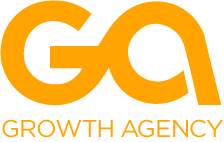If you’re looking for ways to grow your sales and scale your business, ensuring your sales landing pages are performing at their optimal level is a great place to start.
Your landing pages can make or break your conversion rates. After the hard work of driving targeted traffic to your site, the last thing that you want is a page that leaves visitors cold. Here, we’re sharing a few tips to help you create higher converting landing pages, whatever your product or service.
Provide plenty of detail
Your landing pages can make or break your conversion rates. After the hard work of driving targeted traffic to your site, the last thing that you want is a page that leaves visitors cold. Here, we’re sharing a few tips to help you create higher converting landing pages, whatever your product or service.
Today’s consumers continue to evaluate products and consider new options right up until the moment of making their decision. That means you’ll need to provide lots of detail to convince your web site visitor they’re making the right choice, or risk them bouncing off to consider competitor offerings.
- If you’re selling a product, share useful details such as product measurements, materials and weights as early on as possible. This makes it immediately clear that your product fits the bill.
- Regardless of whether your page is dedicated to a product or service, provide three to five bullet points at the top of the page which summarise the key USPs of your product or service.
- Be clear about what’s in the box, or what your service actually entails. Consider creating a table for side-by-side comparison if you have different levels of service or different sizes of products to choose from.
- Be clear on the benefits of your product or service and explain what problem you’re able to solve.
Address commonly asked questions
Include a question and answer section where you can answer the most commonly asked questions about your product or service upfront. Many of today’s consumers like to self-serve, that is to say they’ll research independently rather than get in touch with customer services or a sales rep. Having an FAQ section makes that process easy and means they don’t need to leave your site to find the answers elsewhere. It can also ally fears and reconfirm that they have made the right choice, helping to boost conversions.
Use multimedia where possible
Having media-rich pages provides context, detail and allows your website visitor to imagine that product or service in use. For products, include images which show the item from every angle. Have at least one image which contains dimensions. If possible, include video too.
Don’t skimp on the social proof
Consumer reviews are an intrinsic part of the decision making process. Consumer research confirms that around 88% of shoppers use reviews to discover and evaluate products.
Having an area of your landing page dedicated to authentic, recent reviews can help to boost your conversion rates. In addition to manually pulling in the latest comments from consumers from popular review platforms such as Google Reviews, some sites such as TripAdvisor provide automated widgets to continually display the latest feedback.
Consider incorporating other user generated content (UGC)
In addition to reviews, other UGC such as product ratings, social media posts and consumer imagery can also help to increase your social proof. UGC provides an unbiased take on your product or service, can add credibility to your landing page and therefore, further increase conversions.
Use buttons so your CTAs stand out
Your call to actions need to stand out. The easiest way to do this is to have coloured buttons which the visitor can click on. It’s better to have multiple CTAs spread amongst your page rather than having a single button to buy at the very bottom.


